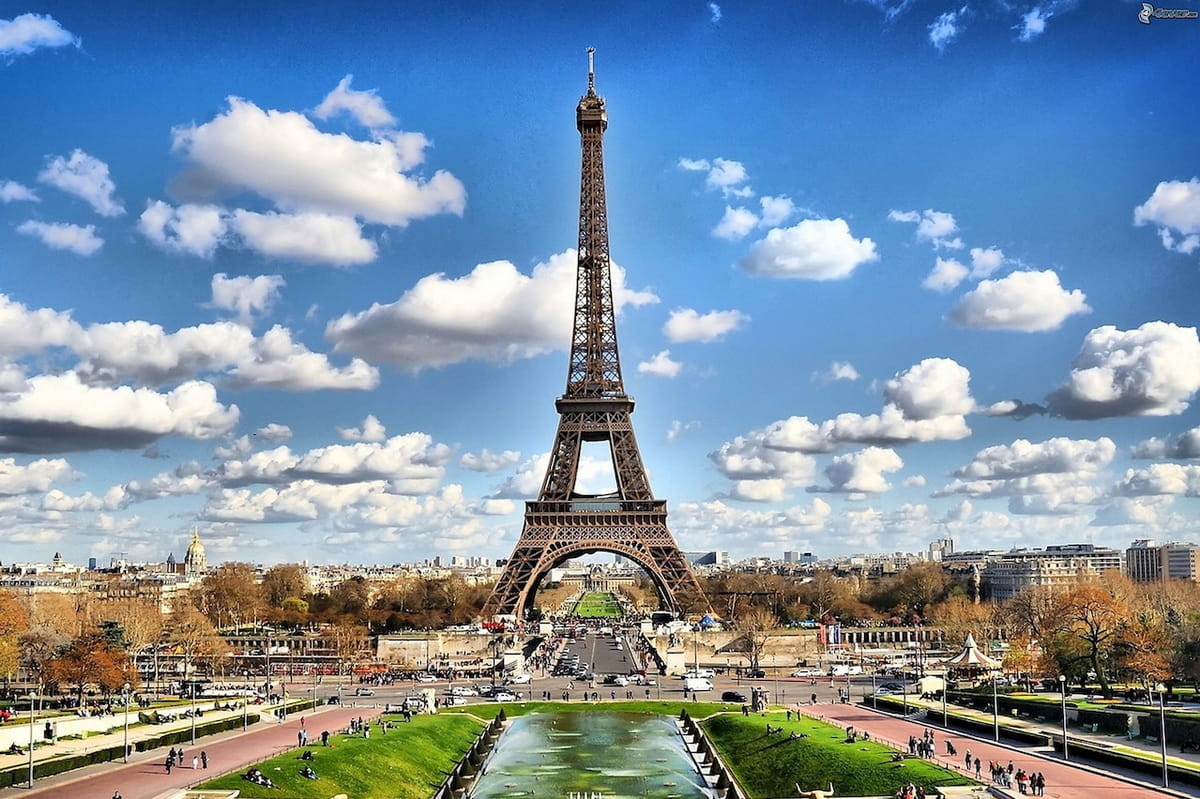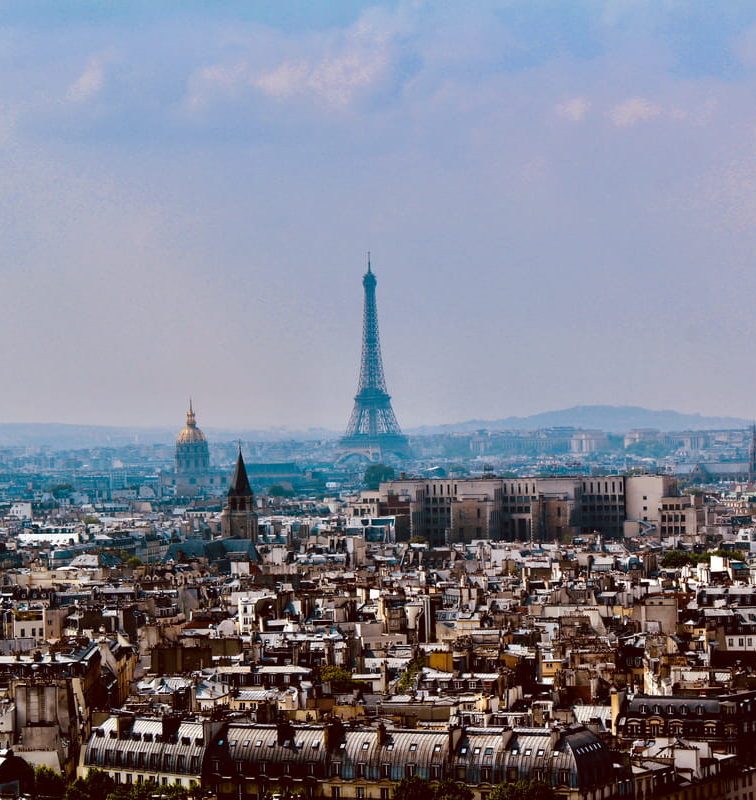Ah, the Eiffel Tower. That iconic iron lady that’s more Parisian than a croissant wrapped in a beret. It’s the world’s most-visited paid monument, with millions flocking yearly to gaze up at its intricate iron lattice work. But did you know it was once considered an eyesore by critics? Or that it was almost torn down and sold for scrap?
We’ve got a smorgasbord of fun facts about the Eiffel Tower that’ll make your next game of trivia a walk in the Parc du Champ de Mars. So, grab your virtual passport, we’re heading to the heart of Paris!
1. The Tower’s Birth: Who Built It & When
Okay, gather ’round, history buffs. The Eiffel Tower was completed on March 31, 1889, by none other than engineer Gustave Eiffel. But hold your horses! Eiffel didn’t actually design the thing. That credit goes to his senior engineers, Maurice Koechlin and Émile Nouguier.
They were the brains, while architect Stephen Sauvestre added the finishing artistic touches. The whole shebang took about two years, two months, and five days to construct. Talk about precision! Eiffel’s firm won the rights to build the tower in a public bid, beating out a whopping 107 other proposals. So yeah, this wasn’t some weekend DIY project!
2. Public Opinion: Love or Hate at First Sight?
Imagine unveiling your masterpiece and having people call it “useless” and “monstrous.” Ouch! When the Eiffel Tower first graced the Parisian skyline, it wasn’t exactly met with a standing ovation. In fact, many high-profile intellectuals and artists, like writer Guy de Maupassant, absolutely loathed it.
They signed a petition called “Artists Against the Eiffel Tower.” They felt the tower was a scar on the face of Paris, taking away from the beauty of landmarks like the Louvre and Notre Dame. Fast forward to today, and it’s like the ultimate glow-up; the tower is now a beloved symbol of France. Who’s laughing now, Guy?

Image source: Wikimedia Commons
3. Temporary Giant: Meant for a Short Stay
This might blow your mind: the Eiffel Tower was originally intended to be a temporary installation, lasting just 20 years. Yep, you heard it right. It was constructed for the 1889 Exposition Universelle (World’s Fair) held in Paris to celebrate the 100th anniversary of the French Revolution.
After the fair, the plan was to tear it down. Why? Because, honestly, who would want a 300-meter iron tower cluttering up their city permanently, right? But thank the radio gods, its utility as a wireless telegraph transmitter saved it from the wrecking ball. Gustave Eiffel himself championed its new purpose, and thus it remains, turning a temporary gig into an eternal star!

Image source: Wikimedia Commons
4. Name Origins: Why “Eiffel” Anyway?
If you think Gustave Eiffel built the Eiffel Tower all by his lonesome while puffing on a pipe and adjusting his monacle, you’re wrong! The Tower’s moniker comes from the engineering firm, Eiffel & Co., responsible for the construction. Though it was designed mainly by Maurice Koechlin and Émile Nouguier, the project bore the name of the company’s owner — Gustave Eiffel.
Eiffel wasn’t too keen initially about slapping his name on this gargantuan iron project, but when it became a sensation (eventually), let’s just say, he didn’t mind the lifetime of bragging rights.
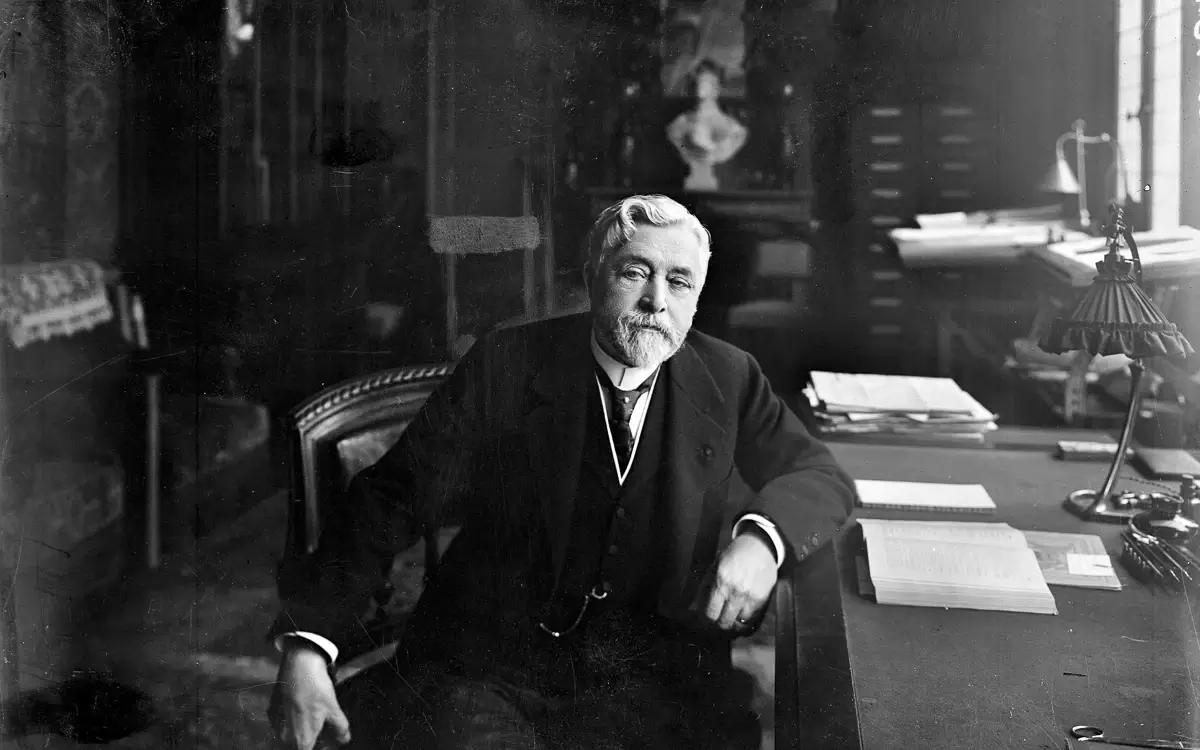
Image source: paris.fr
5. Radio Days: The Tower’s Second Act
So, the Eiffel Tower’s got layers, like an onion—or maybe like a French pastry? Its early days as a radio tower might not be as well-known, but they’re crucial to its survival. During World War I, the Eiffel Tower intercepted enemy radio communications, playing a role in several key battles. After that, it became a permanent radio transmission station.
Fun fact: Gustave Eiffel even had a small apartment at the top of the tower, where he conducted meteorological observations. I guess you could call him Paris’s original concierge with a view!
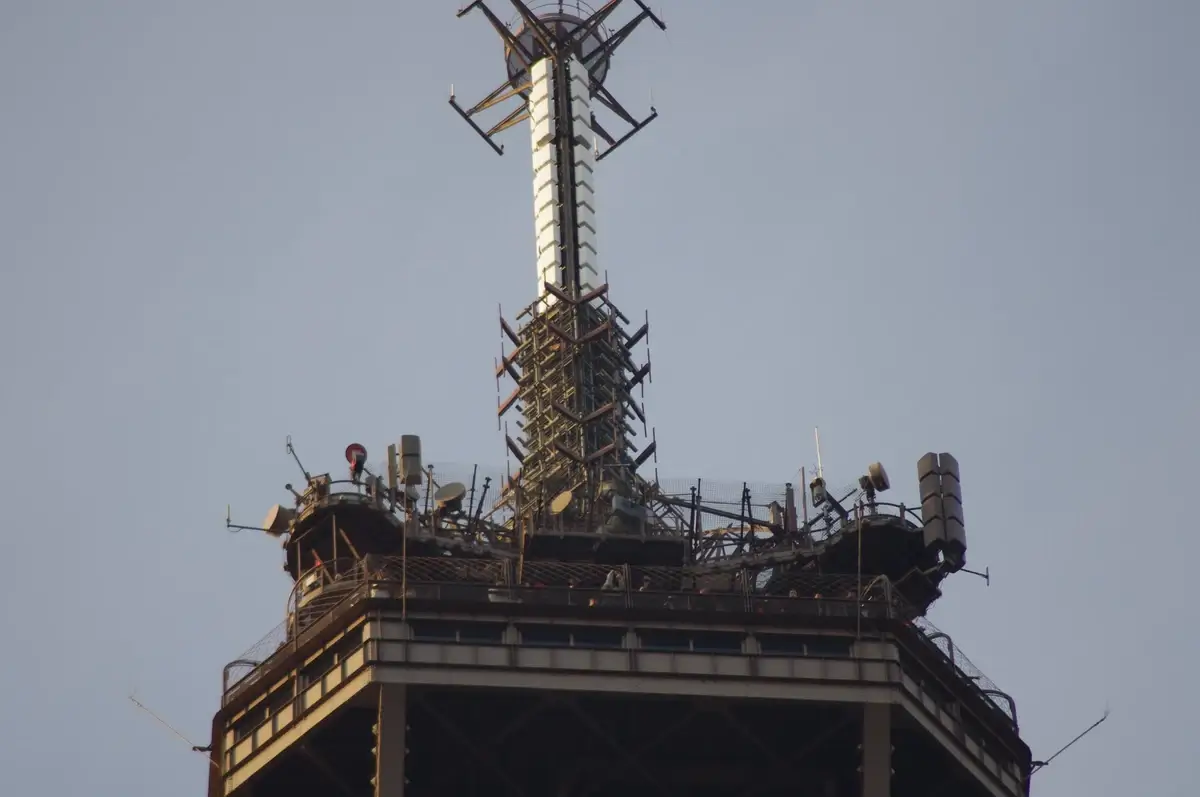
Image source: reddit.com
6. Paint Job: Fresh Coats & Color Changes
You think your home makeover is tough? Imagine repainting the Eiffel Tower! This iron lass gets a new coat of paint every seven years to protect her from rust. And guess how much paint that takes? About 60 metric tons!
The Tower hasn’t always been the brownish-grayish hue we’re familiar with today. It was originally a reddish-brown and even went through a yellow phase. Oh, and the choice of the final color? Voted on by the people of Paris. Talk about fashion-conscious!
7. Tower Height: How Tall Is It?
C’mon, size does matter! Especially when you’re a global icon like the Eiffel Tower. So, how tall is this French skyscraper? The Eiffel Tower stands at an awe-inspiring height of 330 meters (1,083 feet) including its antennas. Back in its day, it was the tallest man-made structure in the world. That’s about as tall as an 81-story building.
Though it’s been surpassed by other skyscrapers, the Eiffel Tower remains the tallest structure in Paris. Zut alors! No other building in the city is allowed to eclipse it. The city says, “You want to build something taller? Non!”
https://youtu.be/6DSUlE8dgP0?si=UsooW_-rgUyf7_1L
8. Stair Count: Step Up to the Challenge
You know what’s more exhausting than a French mime’s performance? Climbing the Eiffel Tower’s stairs. This towering structure is home to a whopping 1,665 steps leading up to the second floor. Sorry, gym rats, you can’t take the stairs to the very top— you’ll have to switch to the elevator.
Why stop at the second floor? Because that’s as far as you can go on foot! The third and topmost floor is accessible only by elevator. Hey, they have to make it a bit easier for you to sip that champagne at the summit, right?
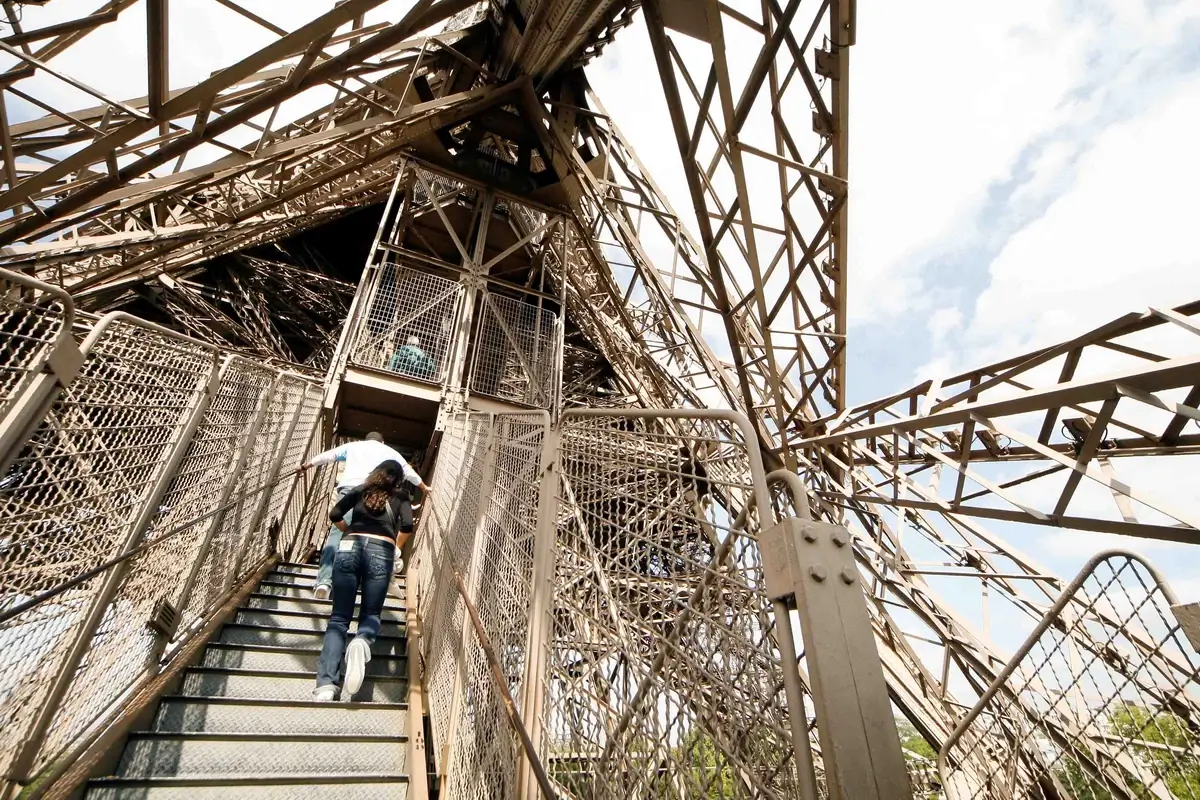
Image source: eiffeltickets.com
9. Light Show: The Tower After Dark
Paris isn’t called the “City of Light” for nothing, and the Eiffel Tower is its sparkling jewel. Every evening, the Tower puts on a dazzling light show that lasts about 5 minutes at the beginning of each hour. Around 20,000 light bulbs are used to make this magic happen. Yep, the Eiffel Tower at night is a whole different level of awesome.
What’s more? There’s also a beacon at the top that sends out light beams as far as the eye can see. I mean, why simply stand there when you can dance, right?
10. Winter Eiffel: Tower in the Cold
Ever wondered what the Eiffel Tower looks like in winter? Spoiler: it’s a winter wonderland! During cold snaps, the Tower can shrink by up to six inches. Bet you didn’t see that one coming! Metal contracts in the cold, you see.
And if you’re lucky, you might catch it covered in snow. Yes, the Eiffel Tower cloaked in white is as romantic as a midnight kiss on New Year’s Eve in Paris. Bucket list, anyone?

David Henry / Pexels
11. Movie Star: Tower’s Hollywood Moments
Ah, Hollywood! Where dreams are made and budgets are blown. You’ve seen the Eiffel Tower grace the big screen, acting as the unmistakable backdrop for romantic rendezvous, spy shenanigans, and existential crises (it is French, after all). From classics like “An American in Paris” to action-packed scenes in “Mission: Impossible – Fallout,” the Tower’s got quite the filmography!
Think of it as Paris’s very own A-list celebrity, but without the scandalous tabloid coverage. Unless you count that one time it almost got sold for scrap. Oh, you didn’t know? Scroll up, buddy!

Image source: henrycavillnews.com
12. Top Views: What You See at the Peak
Okay, you’ve made it to the top! Now what? Oh, just some of the most breathtaking views you’ll ever see, that’s all. The summit offers a 360-degree panorama of Paris that stretches up to 65 km on a clear day. You can spot famous landmarks like Notre Dame, the Seine River, and the Louvre.
It’s not just a treat for your eyes, but also a geography lesson minus the boredom. The view is so good, it almost feels like cheating on a test—you get all the answers without any of the work!
13. Elevator Woes: Early Lift Challenges
Hey, what’s a grand project without some hiccups? The Eiffel Tower’s initial elevators were, let’s say, a tad dodgy. In the early days, these vertical chariots were not only slow but also downright dangerous. There were instances of cables snapping and malfunctions occurring. Yikes!
But fear not, modern-day visitors! Today’s elevators are as smooth as a French crooner’s love song. They’ve come a long way from their perilous past, to give you a smooth and safe ascent (or descent, if heights aren’t your thing).
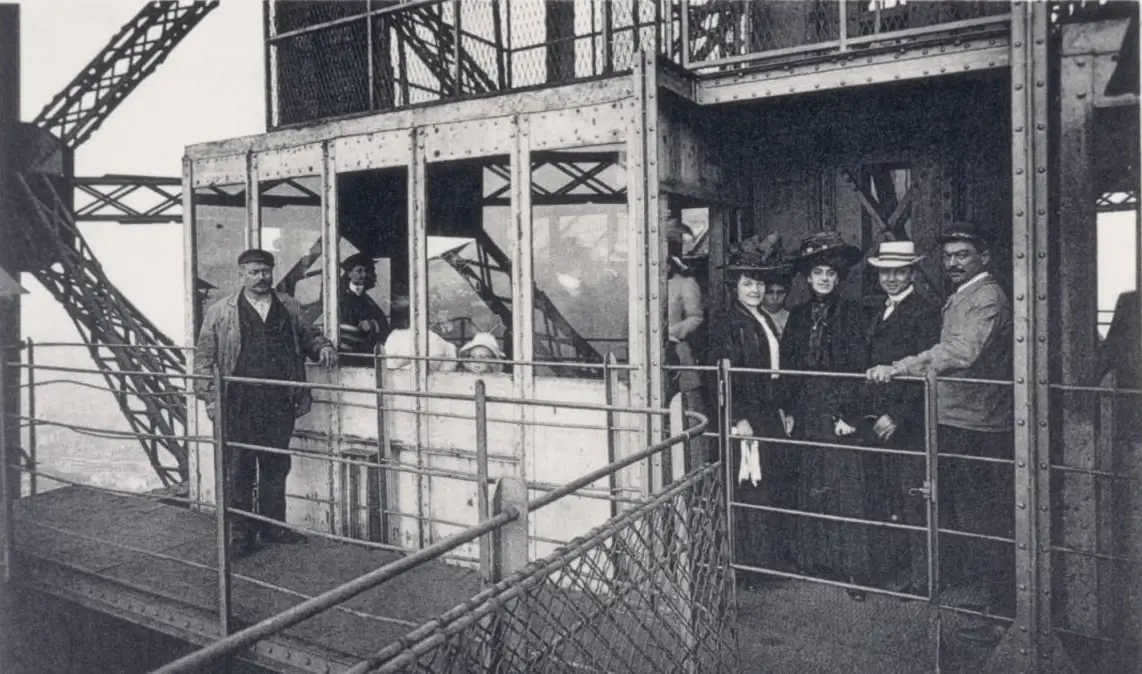
Image source: toureiffel.paris
14. Weather Lab: Experiments at the Top
Ah, the pinnacle of scientific endeavor—or at least the pinnacle of Paris. Gustave Eiffel used his lofty apartment at the top as a sort of weather lab. He conducted experiments on air pressure, temperature, and even carried out wind tunnel tests. Talk about a room with more than just a view!
So, now you know, the Eiffel Tower isn’t just for photo ops and marriage proposals. It’s also a place where science happens. How’s that for fun facts about the Eiffel Tower?
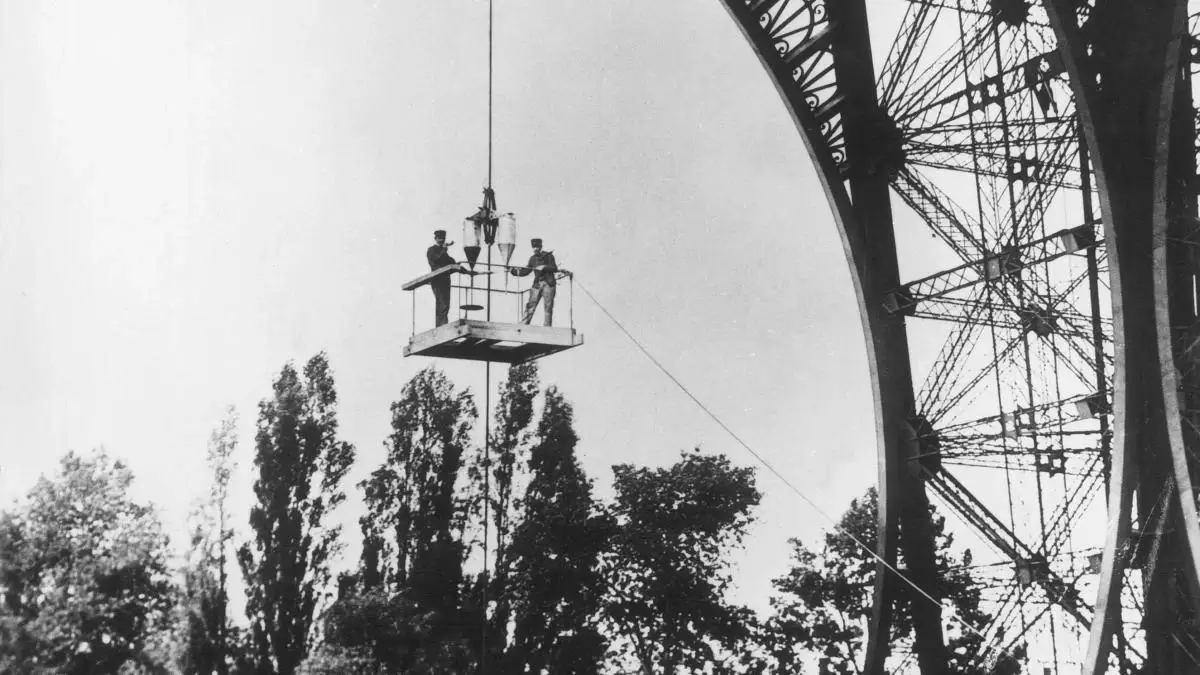
Image source: toureiffel.paris
15. WWII Secrets: Tower During the War
Hollywood’s not the only one that’s had a go at dramatizing the Eiffel Tower; history had its turn too. During World War II, the Tower played a rather secretive role. Hitler ordered it to be demolished, but thankfully, the order was never carried out (phew!). Instead, the French cut the elevator cables so that the Nazis would have to climb the stairs if they wanted to plant their flag at the top. Talk about cardio warfare!
Here’s the kicker: The tower was also used to jam German radio frequencies, helping the Resistance communicate. How cool is that?
16. Tower’s Weight: How Heavy Is It?
So, you know the Eiffel Tower is tall, but do you know how much this hunk of iron weighs? Buckle up: It tips the scales at a whopping 10,100 tons. That’s about as heavy as 18,000 cows—or if you prefer, approximately 6.5 million French baguettes!
The mass of the Tower even has an effect on the ground beneath it, compressing it ever so slightly. In the world of Eiffel Tower fun facts, this one certainly carries some weight!
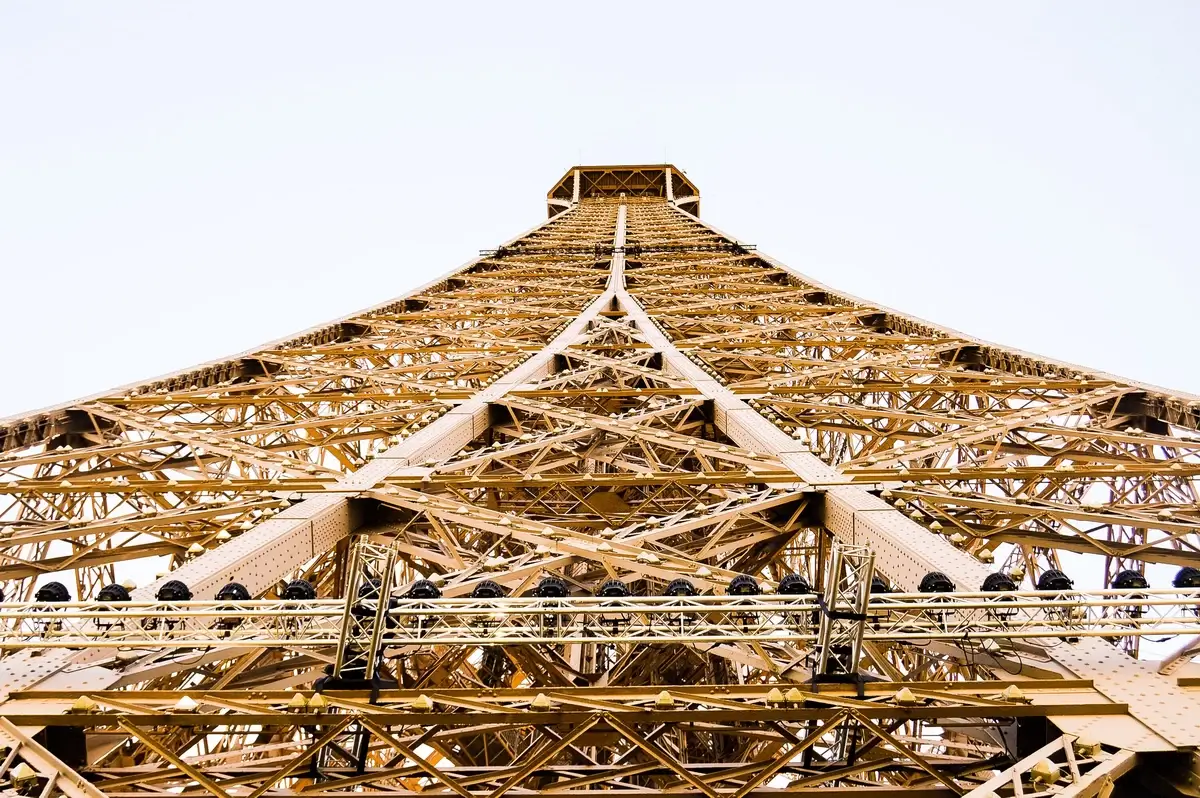
Jitendra Gidwani / Pexels
17. Cosmic Connection: Messages to Space
Move over, NASA. The Eiffel Tower has had its cosmic moments too! In 1910, the Tower was used to send radio messages to the U.S. But wait for it—in 2009, it went interstellar! To celebrate its 120th birthday, a digital time capsule containing thousands of messages was beamed towards a distant planet.
So, next time you look up at the night sky, just remember: there’s a part of the Eiffel Tower reaching out to the cosmos. How’s that for “spaced-out”?
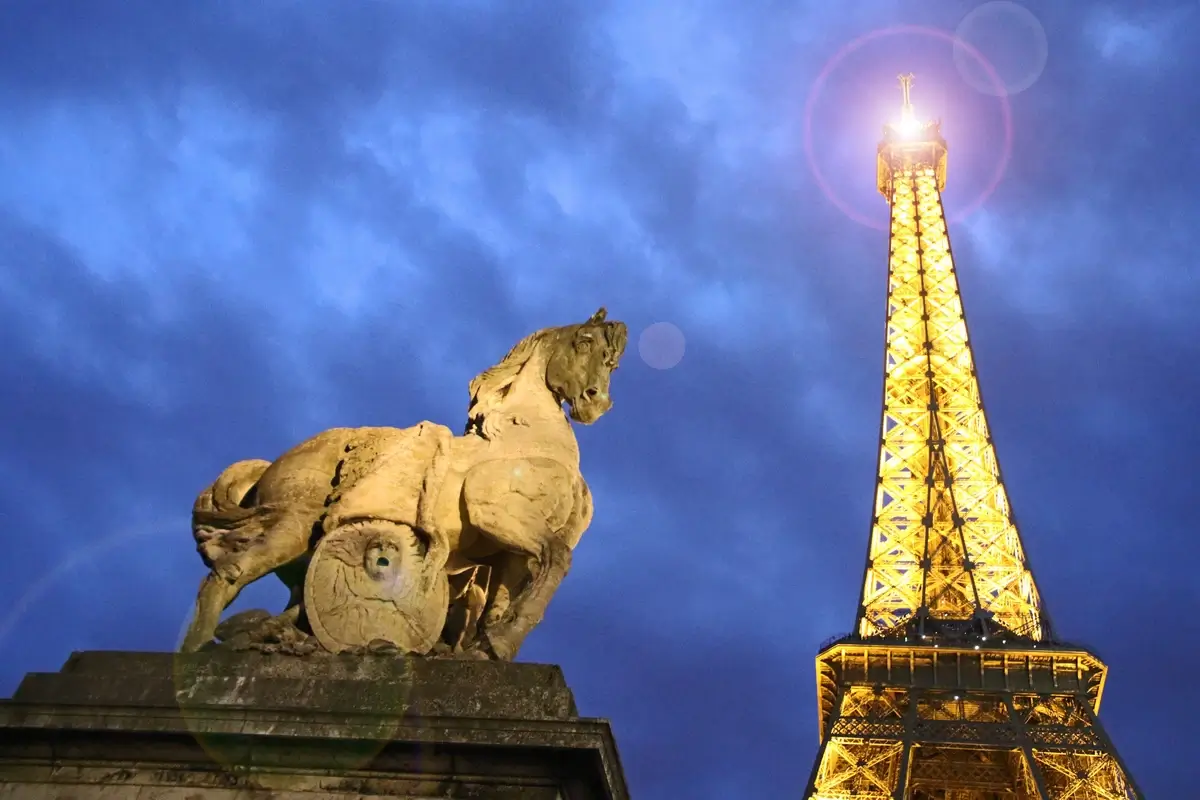
Magda Ehlers / Pexels
18. Secret Room: Eiffel’s Private Space
Imagine owning the penthouse suite of the most famous tower in the world. Gustave Eiffel did just that. Tucked away at the top of the tower is a little-known apartment that Eiffel built for himself. This private space was never rented out, and it’s now a mini-museum you can visit.
Decked out with mannequins representing Eiffel and some of his famous guests like Thomas Edison, it’s like stepping into a page of history. No wonder this guy was the life of the party—at 330 meters in the air!
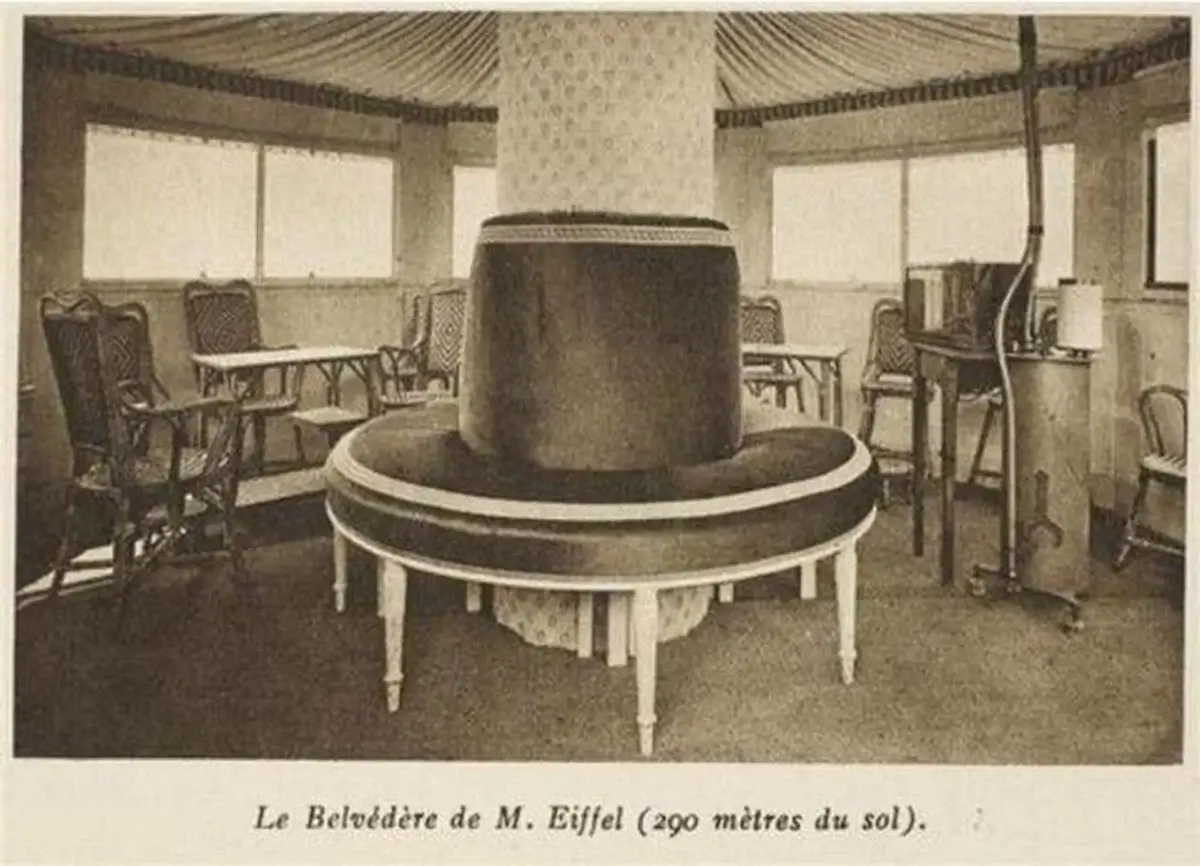
Image source: bosshunting.com.au
19. Green Goals: Eco-Friendly Efforts
So you think iron and metal are all about the bling and none of the green? Think again. The Eiffel Tower has been making strides in the eco-department, and it’s not just for show.
In 2015, the Tower strapped on four wind turbines to produce electricity. These babies generate enough juice to power the commercial areas on the first floor. But wait, there’s more. Solar panels have also been installed to bask in that French sunshine. And let’s not forget about rainwater collection systems to boot.

Image source: cbsnews.com
20. Eiffel Eats: Tower Dining Options
Your tummy’s rumbling, and you’re on the most iconic structure in France. What do you do? You dine, of course! The Tower’s not just for selfies, you know. It has some mouthwatering options up its sleeves—or should I say, up its iron lattice.
There’s the Michelin-starred “Le Jules Verne” for those who want to be wined and dined. But if you’re more of a ‘grab-and-go’ kind of person, there are also snack bars that serve up quick bites. Either way, you get to eat with a view that’s just magnifique!
21. Global Twins: Tower Replicas
Now here’s one of those fun facts about the Eiffel Tower that you can whip out at parties to look cool. The Eiffel Tower has inspired a whole generation of towers worldwide. We’re talking half-scale versions in Vegas and look-alike radio masts in Tokyo. And these are just a few of the countless ‘mini-me’s scattered around the globe.
They might not have the OG’s charisma, but they give it the ol’ college try, that’s for sure. It’s a form of flattery that spans continents!
22. Ticket Price: What’s the Cost?
I hear ya, how much will this iconic escapade set me back? Well, brace yourself. As of 2023, an adult ticket to the summit via the lift will knock €25.90 out of your wallet. Want to save a few bucks and burn some calories? Then stairs are your friend at €10.40 up to the second floor.
Sure, it’s a splurge. But remember, you’re buying an experience that’s etched in iron and romance. How can you put a price on that?
23. Visitor Marks: Early Graffiti Tales
Graffiti and historical monuments usually make us cringe, but here’s a fun fact about the Eiffel Tower that might make you see it differently. Way back when the Tower was still the new kid on the block, visitors were actually encouraged to leave their marks—literally.
Thomas Edison, that light bulb genius, scrawled his signature on the wall of Gustave Eiffel’s private apartment at the top. You heard that right. So, the next time you frown at the modern-day scribbles on historical landmarks, remember that even the most iconic ones had their ‘tagging’ days.
24. Celeb Visits: Stars Under the Stars
Ah yes, where do celebs go when they’re in Paris? You guessed it: the Eiffel Tower. From Tom Cruise to Beyoncé, the tower has seen a constellation of stars beneath its twinkling lights. Not just actors and musicians, even politicians and world leaders have taken the iron-clad tour.
Let’s just say if the Eiffel Tower had a guest book, it’d be a who’s who of pop culture and global influence. Oh, the stories it could tell!
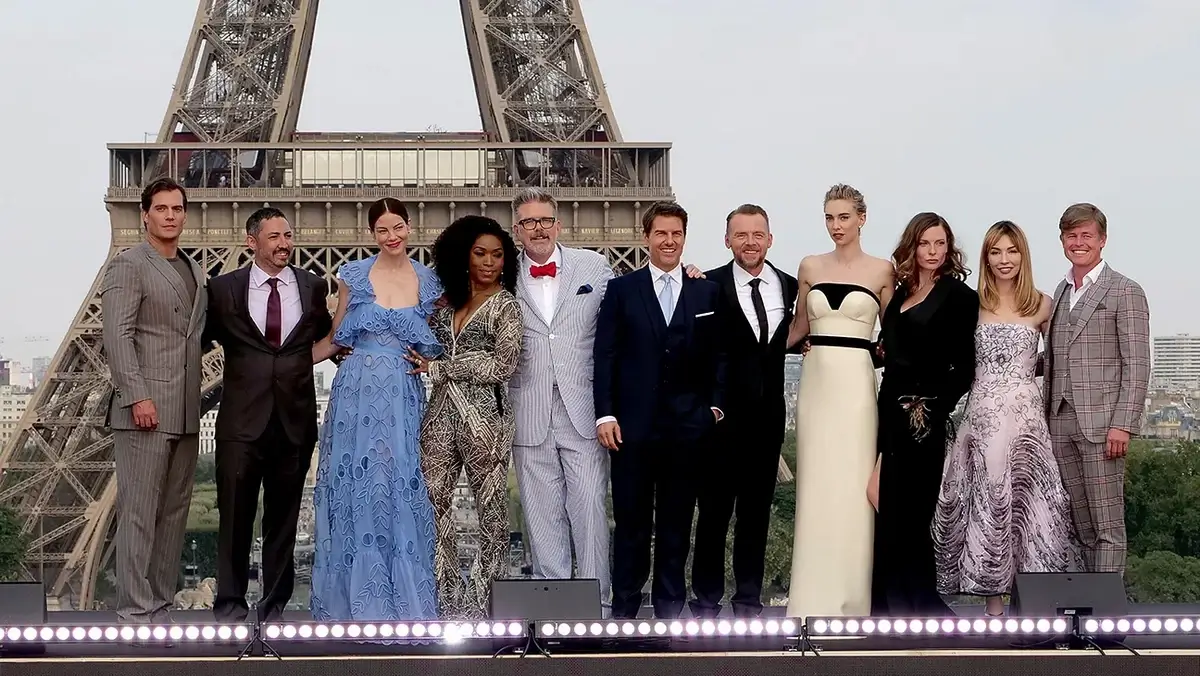
Image source: hollywoodreporter.com
25. Curious Constructions: What’s Inside the Legs?
Bet you didn’t know this: the legs of the Eiffel Tower aren’t just for show; they’re functional too. Inside those legs are various rooms and technical spaces that help keep the Tower running smoothly. From control rooms to small shops, they’re like mini-malls for maintenance crews.
Oh, and don’t forget the concierge. Yup, the Tower had its own concierge once upon a time, living in a small room within one of its legs. Luxury or necessity? You decide.
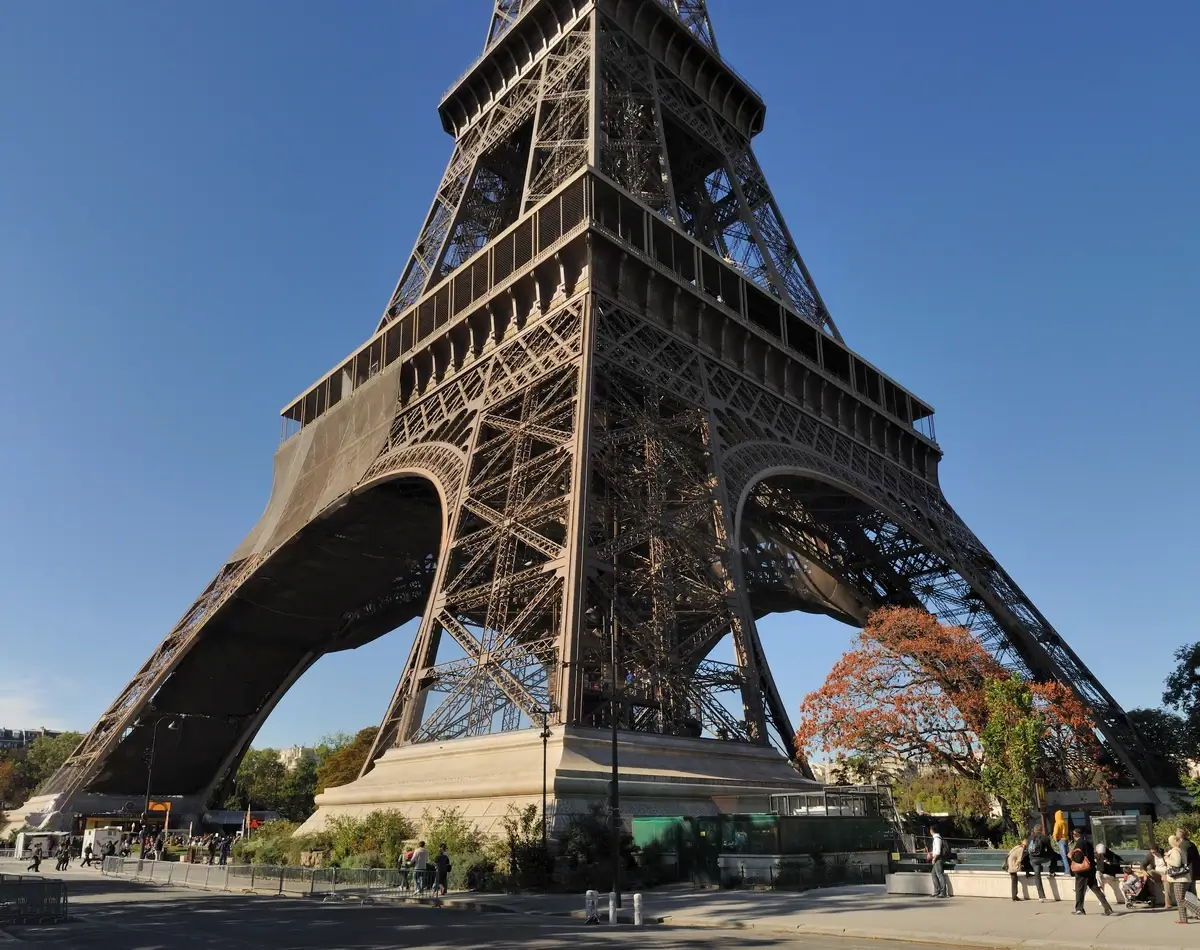
Image source: Wikimedia Commons
FAQ
What are 10 interesting facts about the Eiffel Tower?
- A Tower of Controversy: When Gustave Eiffel first presented his blueprints in the 1880s, the Parisian elite reacted as if he’d proposed a 1,000-foot croissant filled with ketchup. They hated it! Guy de Maupassant, a French writer, even claimed to detest the tower but ate lunch at its restaurant regularly, simply because it was the one place in Paris where he couldn’t see the “monstrosity.”
- Master of Disguise: She’s a coquettish one, this Eiffel Tower. She gets a fresh coat of 60 tons of paint every seven years—just enough to make even the Mona Lisa green with envy. That’s a lot of make-up!
- A Saucy Stunt: In 1912, Austrian tailor Franz Reichelt thought he could fly off the tower using a parachute suit of his own design. Spoiler alert: He couldn’t. But it’s said that his mustache survived the 57-meter fall intact.
- License to Sell: Gustave Eiffel was no fool; he knew real estate when he saw it. He built himself a private apartment at the top of the tower. Alas, it’s not on Airbnb, but even Thomas Edison popped by once for a soirée. Talk about a high-profile guest list!
- The Honeymoon Suite for Radio Waves: Before social media, how did we “like” and “follow”? We broadcasted! And the Eiffel Tower was a pioneer in this, serving as a massive radio antenna that saved it from being torn down.
- Elevator Escapades: Gustave Eiffel had a fear of elevators, which is as ironic as a fish fearing water. He mostly took the stairs, which are a whopping 1,665 steps to the top. Great for the glutes, darling!
- A Conspicuous Countdown: On New Year’s Eve 1999, Parisians held their breath as the Eiffel Tower acted as a gigantic countdown clock for the Millennium. It went off without a hitch, thankfully. Y2K who?
- Bling, Bling, Baby: Forget about your grandma’s chandelier. The Eiffel Tower twinkles for 5 minutes every evening thanks to 20,000 light bulbs. Now that’s what I call bling!
- Weight Watcher: She may look heavy, but don’t let those curves fool you. The Eiffel Tower weighs less than the total weight of the air swirled around her, at around 10,100 tons. It’s as if she’s floating, ever so gracefully, above Paris.
- Starstruck: Last but not least, this Iron Lady has quite the filmography. She’s appeared in over 30 movies, from romantic classics like “An American in Paris” to action-packed features like “Mission: Impossible – Fallout.” A diva on and off-screen, I must say.
How old is the Eiffel Tower?
This ravishing lady is no spring chicken but ages like fine Bordeaux. The Eiffel Tower was completed on March 31, 1889, making her a grand 135 years old as of 2024.
Why was the Eiffel Tower built?
Contrary to popular belief, Gustave Eiffel wasn’t trying to one-up the Leaning Tower of Pisa. The tower was built as the entrance arch for the 1889 Exposition Universelle (World’s Fair) held in Paris to celebrate the 100th anniversary of the French Revolution. It was also meant to showcase France’s industrial prowess.
How tall is the Eiffel Tower?
She’s a towering beauty at 330 meters (1,083 feet), including her antennas. Without the bling on top, the structure alone stands at 300 meters. Take that, Big Ben!
What are 3 things you can do at the Eiffel Tower?
Ah, the possibilities!
- Dining with Altitude: The 58 Tour Eiffel and Michelin-starred Le Jules Verne offer gastronomic delights and spellbinding views. Date night, anyone?
- Champagne Toast: There’s a champagne bar at the summit. Seriously, you can sip bubbly 330 meters above Paris. Talk about an elevated experience!
- Photographic Frenzy: Whether you’re a professional photographer or just armed with a selfie stick, capturing the panorama of Paris from the Eiffel Tower is a must-do.
Why is the Eiffel Tower so unique?
Well, where do I start? Aside from her pioneering iron structure, she’s a symbol of love, an engineering marvel, a broadcasting antenna, and even an art installation with her evening light shows. She’s a Parisian Swiss Army knife, multi-functional and chic!
Does the Eiffel Tower light up at night?
Darling, does a peacock have feathers? Absolutely! Every evening, she’s adorned with over 20,000 light bulbs that make her sparkle for 5 minutes every hour, starting at sunset. It’s the ultimate Parisian light show.
How much does the Eiffel Tower cost?
Ah, the million-dollar question, or rather, the multi-million Franc question. The original construction cost was around 7.8 million gold Francs in the 1880s. As for visiting today, ticket prices vary based on age and how high you want to go—ranging from around €10 to €25.
What is beautiful about the Eiffel Tower?
Oh, mon amour, where do I begin? Its symmetrical iron lattice, the iconic silhouette against the Parisian sky, and the breathtaking panoramic views it offers are just a few reasons. It’s a work of art and engineering that captures hearts and imaginations around the globe.
How many stairs are in the Eiffel Tower?
If you’re looking to tone those calves, you’re in luck. The Eiffel Tower has 1,665 steps leading up to the second floor (the stairs don’t go all the way to the top, mind you). Trust me, the StairMaster has nothing on this workout.


